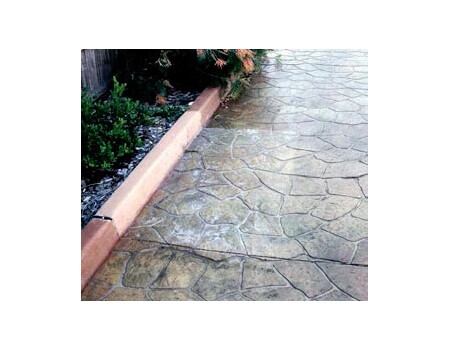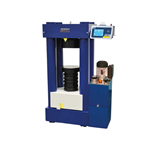Efflorescence is the formation of salt deposits, usually white, on or near the surface of concrete causing a change in appearance. Apart from the discolouration, efflorescence is generally harmless. This is best described as being 'a skin trouble and not a deep-seated disease'.
Primary efflorescence is efflorescence occurring during the hardening of the concrete. Secondary efflorescence is the efflorescence resulting from the weathering of the hardened concrete. Crypto florescence is the deposition of salt within the pores of concrete below the exposed surface. The force of crystallisation growth may cause some fretting. Light coloured concrete shows the deposit much less than darker coloured concrete. With time, efflorescence becomes less extensive. Efflorescence is most obvious in the winter but may be observed throughout the year after a heavy rain and a drop in temperature.
How efflorescence occurs
Efflorescence occurs through one or a combination of the following processes. Chemical processes Formation of efflorescence can be the result of a reaction of concrete constituents with carbon dioxide and/or sulphurous gases.
Carbon dioxide
Alkalis in the concrete react with carbon dioxide to produce two forms of salts in concrete: sodium and potassium carbonate and calcium carbonate.
Alkalis and calcium hydroxide in solution in the pores migrate to the surface, this migration depends on the permeability, voids and moisture content of the concrete. At the water-air interface, atmospheric carbon dioxide reacts with these hydroxides to form calcium, sodium and potassium carbonate. Penetration of water can cause efflorescence in the same way.
Sodium and potassium carbonates appear on the concrete as a soft white fluff that can be easily removed (although it may appear again). This type of efflorescence usually appears if the concrete has been exposed to wetting and slow drying. Calcium carbonate appears usually as a white 'bloom' diffused over certain areas. In worst cases it appears as a hard white crust. It is the most troublesome and is difficult to remove. Calcium carbonate efflorescence is likely to form on concrete in which hydration is interrupted by premature drying and which is subsequently wetted.
Sulphurous gases
Sulphur dioxide and hydrogen sulphide, under damp conditions, react with the surface layer of the concrete and/or mortar joints in masonry construction forming calcium sulphate crystals. This white insoluble salt is washed onto the concrete or masonry facing after it rains. In industrial areas, the SO 2 concentration in the atmosphere could be ten times the average value. Under such high sulphurous atmospheric concentration, it is doubtful that this type of efflorescence can be avoided even with concrete or masonry that is least susceptible.
Physical processes
The formation of efflorescence depends on a number of physical processes involving both salt and water transfer in and out of concrete or masonry. Specific conditions may dictate the extent to which any of the many processes involved take place and hence may dictate the extent of occurrence of efflorescence.
Various physical processes are described separately although in practice, these are interrelated, thus creating a rather complex mechanism.
Solubility of salts
Solubility of a salt (the mass of a given salt that can be dissolved in a fixed mass of water) depends on the properties of the salt and on temperature. The degree of saturation of salts contained in the concrete or masonry at the time of drying out will influence the occurrence of efflorescence.
In some instances when concrete absorbs enough water that the salt is not saturated, efflorescence will not occur. For the same amount of salt, if saturation is reached, efflorescence will occur on drying out.
Also, efflorescence may occur following a drop in temperature, e.g. as between summer and winter. Warm water will usually dissolve more of a given salt. If we consider sodium sulphate, 100 parts of water will dissolve nine parts of sodium sulphate crystals at 10°C and more than double this amount (19.4 parts) at 20C.
Saturation occurs when no more salts can be dissolved in the water. Once saturated, cooling of a given solution will result in some of the salts being deposited in a solid form. On the other hand, at the same temperature, loss of water through evaporation will result in some of the salt being deposited.
Hygroscopicity (or affinity to water)
Salts that are hygroscopic are not likely to form efflorescence. Salts having greater affinity for water can pick up water from the air and therefore, at normal outdoor temperature, they are unlikely to dry and appear as efflorescence. Examples of these are sodium and potassium hydroxide present in Portland cement. After carbonation, however, sodium carbonate may appear as efflorescence if not mixed with potassium carbonate which is also hygroscopic.
Crystal form
The readiness with which efflorescence forms depends on the shape of the salt crystals that are deposited from solution. This is a complex and difficult field which has not been fully explored. However, it is known that sodium and magnesium salts form efflorescence much more readily than potassium salts.
Pore structure
Pore structure of concrete or masonry containing saturated salt solutions influences the drying out and location of salt deposits on evaporation of water. The pore structure as a whole will influence the rate of water transfer
Causes of efflorescence
While there is virtual agreement that efflorescence is caused by multiple factors in combination (usually catalysed by climatic and environmental conditions), views are quite discordant on which factors are the major culprits. It is usually impossible to deduce the exact causes of a specific case with absolute certainty.
Concrete
Factors related to concrete are:
Constituents
- Cement
- The choice of cement type/make influences efflorescence only in exceptional cases. Pigments in coloured cement and other admixtures added to concrete or mortar may contribute to the potential to efflorescence through their salt content. The inclusion of fly ash and slag can be effective in reducing the occurrence of efflorescence, unless they are high in alkalis and sulphates.
- Aggregates
- Aggregates contribute to efflorescence if they contain soluble salts. Sand contaminated with salt is a major factor. Sands occurring in close proximity to the sea are an obvious risk. Aggregates containing soluble sulphates, e.g. some expanded clay and shale and blast furnace slag, can cause efflorescence.
- Salts
- Soluble salts available in the materials used to make concrete or masonry are capable of being transported and deposited on the surface as efflorescence. The salts are mainly calcium, magnesium, iron and metal sulphates, and chlorides. The typical presence of water soluble salts in the major constituents is: pigment 0.3%, aggregate 0.3%, water 0.2%, lime (for masonry mortar) 0.7%, cement 2%.
- Water/Cement
- Generally, a high water cement ratio results in porous blocks with micro voids becoming interconnected. Such micro structure encourages the movement of water and salt solutions through the block giving rise to the potential to efflorescence.






















